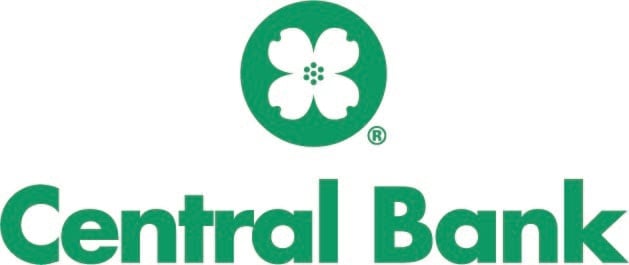Compare Current VA Loan Rates | Monday, December 22, 2025
Rates are current as of December 22, 2025 5:49 AM EST
APR 5.68%
-0.08% 1wAPR 6.54%
-0.12% 1w
NMLS#1880338
APR
5.39%
APR
5.39%
Interest rate
5.25%
Est. mo. payment
$2,237/mo
Total fees
$6,263
Next Door Lending is a wholly-owned subsidiary of NerdWallet
Show details
The Nerdy headline
Next Door Lending, a mortgage broker, offers expert assistance shopping for and closing a loan, as well as specialty loans at competitive rates. Mortgages are not available in every state.
- Offers a variety of loan types, including first-time buyer programs and loans for self-employed borrowers.
- Real-time rate quotes available while working with a broker.
- Responsive customer service.
- Competitive pricing often available, especially for non-traditional borrowers.
- Does not publish interest rates online.
- No mortgage mobile app.
- Loans are not available in every state.
Show details
The Nerdy headline
Better provides a seamless and easy-to-navigate application process and generally offers lower mortgage rates than average. VA loans are available in some states.
- Offers a program allowing qualifying buyers to make cash offers.
- Makes it easy to see customized mortgage rates.
- Average interest rates are on the low end compared to other lenders, according to the latest federal data.
- Doesn’t offer USDA loans.
- VA loans are not available in every state.
- Doesn't offer home equity loans.
Show details
The Nerdy headline
Tomo’s online rates comparison tool is among the best we’ve seen for shopping rates — and both their rates and fees are competitive. While they don’t offer refinance or home equity options, the solid lineup of purchase loans could be a good fit for a wide range of home buyers, including those with credit challenges.
NerdWallet rating
5.0
- Comprehensive online rates comparison tool makes it easy to customize sample rates.
- Mortgage rates are on the low side, according to the latest federal data.
- Offers financing options for borrowers with lower credit and those without Social Security numbers.
- No refinance or home equity options.
- Loans not available in all states.
Show details
The Nerdy headline
Home loans overall
NerdWallet rating
4.5
- Offers a variety of mortgage options, including jumbo loans, and FHA and VA loans.
- Offers home equity loans and lines of credit.
- Displays customized rates, with fee estimates, without requiring contact information.
- Doesn’t offer mortgages in all 50 states.
- Home renovation loans are not available.
Show details
The Nerdy headline
First Federal Bank stands out for its relatively low VA interest rates and fees and its emphasis on government loans, including VA.
VA loans
NerdWallet rating5.0
- Big VA lender, by loan volume.
- Low average VA origination fees compared to other lenders.
- Offers low VA mortgage rates compared with other lenders.
- No mobile app.
- Does not offer VA rehab and renovation loans.
Show details
The Nerdy headline
Midwest-rooted Central Bank offers an online application, which you can track via mobile app. But you’ll have to contact the bank for mortgage rates.
Home loans overall
NerdWallet rating
4.0
- Among the best when it comes to online convenience.
- Offers a full selection of mortgage types and products, including jumbo, home equity, and government loans.
- Claims to offer preapproval within 24 hours of loan application.
- You'll have to complete a loan application to see mortgage interest rates.
- Bank branch locations limited to the Midwest.
- Does not offer home equity lines of credit.
Show details
VA loans
NerdWallet rating
3.5
- Offers a purchase loan program with no lender fees for educators and first responders.
- Home equity lines of credit and renovation loans are available.
- Loans available for health-care professionals and self-employed borrowers.
- Mortgage rates are not published online.
- Doesn’t offer home equity loans.
Show details
The Nerdy headline
New American Funding offers a large menu of loan products, including government loans, but its mortgage origination fees tend to be on the high side.
VA loans
NerdWallet rating4.0
- Offers a wide variety of purchase and refinance mortgages with an emphasis on helping underserved communities.
- Its home equity line of credit can be used for an owner-occupied or second home.
- Offers a program to enable buyers to make cash offers.
- Mortgage origination fees tend to be on the high end, according to the latest federal data.
See more options
About these rates: The lenders whose rates appear on this table are NerdWallet's advertising partners. NerdWallet strives to keep its information accurate and up to date. This information may be different than what you see when you visit a lender's site. The terms advertised here are not offers and do not bind any lender. The rates shown here are retrieved via the Mortech rate engine and are subject to change. These rates do not include taxes, fees, and insurance. Your actual rate and loan terms will be determined by the partner's assessment of your creditworthiness and other factors. Any potential savings figures are estimates based on the information provided by you and our advertising partners.
Explore historical VA rate trends
See how rates have changed over time to understand past patterns and economic fluctuations

Historical timeline
Loan purpose
Loan type
National average 5.68%
Today's average mortgage rates
| Product | Interest rate | APR |
|---|---|---|
| 30-year Fixed | 6.06% | 6.07% |
| 30-year Fixed FHA | 6.12% | 6.86% |
| 30-year Fixed VA | 5.55% | 5.68% |
| 20-year Fixed | 5.95% | 5.96% |
| 15-year Fixed | 5.45% | 5.47% |
| 10-year Fixed | 5.40% | 5.43% |
| 3-year ARM | 8.19% | 7.46% |
| 5-year ARM | 6.15% | 6.54% |
| 7-year ARM | 6.08% | 6.46% |
| 10-year ARM | 6.06% | 6.07% |
Accurate as of 12/22/2025.
Data source: ©Zillow, Inc. 2025. Use is subject to the Terms of Use
Today's VA mortgage rates | Monday, December 22, 2025
VA Mortgage Rates: What You Need to Know



Taylor Getler
Michelle Blackford
Jeanette Margle
Current VA mortgage rates
VA loan eligibility requirements
- Active-duty service members who served 90 continuous days.
- Veterans who have met length-of-service requirements (generally 90 days in wartime and 181 days in peacetime).
- Service members or veterans who have completed 90 days of active-duty service or six creditable years in the Selected Reserve or National Guard.
- Surviving spouses of veterans who died while in service, died from a service-connected disability, went missing in action or were a prisoner of war. Surviving spouses who have remarried are only eligible if the marriage was after age 57 or after Dec. 16, 2003.
What determines my VA loan interest rate?
- Credit score: Generally speaking, higher scores come with lower rates. While the VA doesn’t set a specific minimum credit score, lenders will generally want to see a score of at least 620.
- Existing debt: Ideally, your total amount of monthly debt obligations (including your mortgage and other loans) should not account for more than 41% of your monthly pre-tax income.
- Loan term: While shorter mortgage terms will have a higher monthly payment (say, a 15-year loan vs. a 30-year loan), they also come with lower rates.
- Down payment: While this isn’t required for a VA loan, a down payment will lower your loan-to-value ratio, which can result in a lower rate.
- Overall market conditions: Average mortgage rates fluctuate daily and are influenced by many economic factors, as well as the actions of the Federal Reserve.
- Lender: Interest rates can vary by lender, which is why it’s important to shop around with at least three. NerdWallet’s experts have curated a list of our top picks for VA lending.
How VA loans compare with conventional mortgages
Factors to consider | VA loans | Conventional loans |
|---|---|---|
Lenders | ||
Interest rates | ||
Property type | Primary home only | Primary or second home, investment properties |
Minimum down payment | Zero, most instances | Usually at least 3%. Some lenders offer special zero-down loans. |
Mortgage insurance | No mortgage insurance. One-time VA funding fee of 1.25% to 3.3% of loan amount for purchase mortgages. | Private mortgage insurance usually required if down payment is less than 20%. |
Minimum credit score | No minimum set by VA, but a 580-620 FICO score is a common lender requirement. | A 620 FICO score is typical. |
Maximum debt-to-income ratio | Lenders will give more scrutiny if DTI is over 41%. | Ideally under 36%, but higher ratios can be accepted. |
Pros and cons of VA loans
- Buy with zero down: Qualified VA borrowers may buy without making a down payment.
- No mortgage insurance: Even with a 0% down payment, VA borrowers don’t pay mortgage insurance. Instead, they pay a one-time funding fee.
- Flexible loan qualifying standards: The VA has no minimum credit score requirement, although lenders often require credit scores of 620 or higher. When assessing affordability, the VA looks at how much money is left over after the borrower’s monthly expenses.
- Funding fee: Although VA loans don’t have mortgage insurance, they do require a funding fee paid at closing. The funding fee varies from 1.25% to 3.3% of your loan amount, depending on down payment size and whether it’s your first or a subsequent VA loan. Note that veterans who are receiving (or eligible for) VA disability benefits may be exempt from paying the funding fee — check with your lender to confirm your status.
Learn more about VA loans:
Frequently asked questions
Will VA loan rates go up or down?
Average mortgage rates fluctuate daily and are influenced by the economy’s overall rate of growth, the inflation rate and the health of the job market. See NerdWallet’s mortgage interest rates forecast to get our take.How much does a VA loan cost?
Most borrowers will pay a VA funding fee. For purchase loans with a zero-down payment, the VA funding fee is 2.15% of the loan amount if this is your first VA loan. It can be lower for some refinances and can be waived for disabled veterans and some surviving spouses. Active-duty service members who have received a Purple Heart are exempt from the funding fee. You’ll also be responsible for other closing costs, such as appraisals and inspections.What’s the difference between a VA interest rate and APR?
The interest rate is the percentage that the lender charges for borrowing the money. The APR, or annual percentage rate, can reflect a more accurate cost of borrowing. The APR calculation includes fees and discount points, along with the interest rate.APR is a tool used to compare loan offers, even if they have different interest rates, fees and discount points.
More mortgage tools and resources
Latest mortgage news and analysis
View rates by loan type or state
Get even more specific with rates personalized to your situation







